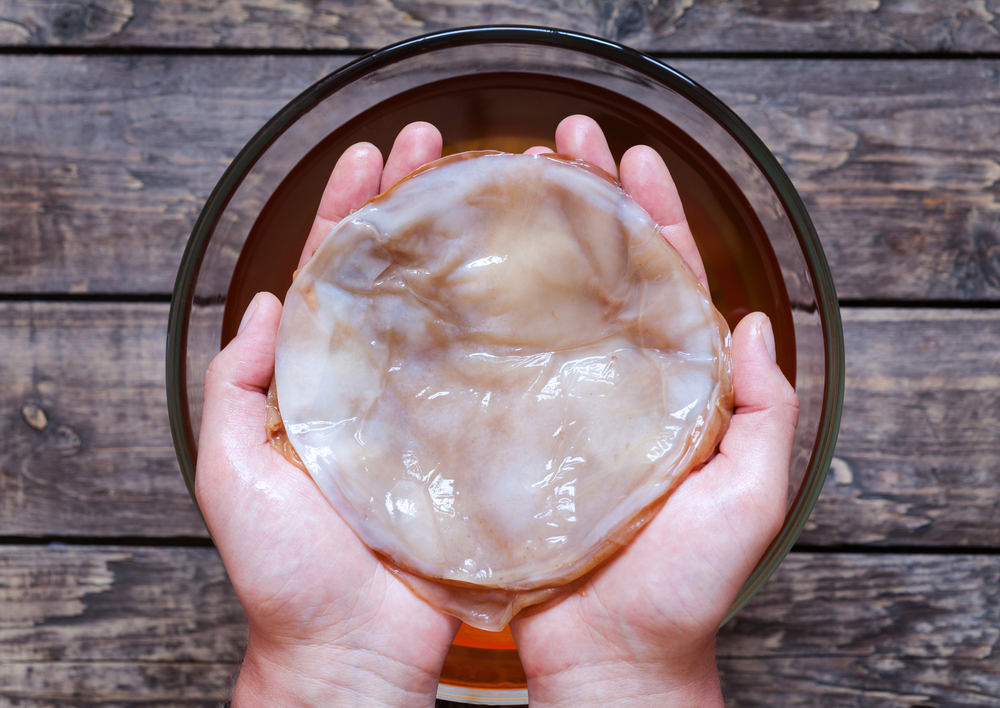
03 Oct Know the difference between Kombucha and Jun
The world has gone fermentation crazy and for good reason. With the host of heavy to digest foods sneaking into our diets lately, our gut health could do with some boosting. That’s where the miracles of microbes come in. Wild Fermentation author, Sandor Ellix Katz believes part of this thrilling renaissance lies in our awakening of ourselves as “co-evolutionary beings, part of a greater web of life.” In essence, the creating and ingesting of living health to enhance our own. Kombucha has already done its due diligence in introducing health-seekers to the wellness potential of fermented tonics. But no one favoured product lingers in the limelight for too long. Jun tea is now the health elixir popping up everywhere and just in case you were feeling a little out of the health loop, wondering if they were the same thing or not, we thought we’d shed some light on the difference between kombucha and Jun to put you back on your A-game.
What is Kombucha?
Kombucha needs little introduction, as the now widely popular fermented probiotic drink set into action by SCOBY cultures in a mixture of tea and sugar.
One source believes the name originates from the Japanese version of kombucha tea, which was made from kombu (the Japanese word for kelp). Another sites a Korean physician named Kombu who treated the emperor with a healing tea, hence ‘kombu’ + ‘cha’ (meaning tea).
What you should know about kombucha:
- Kombucha is brewed or fermented over a period of 7-30 days but on average 5-14 days
- Likes warm, humid climates
- Made by fermenting tea using a symbiotic colony of bacteria and yeast (that’s the SCOBY)
- The culture is placed in a bowl of green tea or black tea
- Kombucha is sweetened with sugar
- A kombucha scoby culture essentially looks like a pinkish brown rubbery flapjack
- After the fermentation period in which the scoby digests the sugar and caffeine, the tea is infused with vitamins, minerals and enzymes
- The alcohol produced by the yeast is also broken down and instead turns into a health-giving organic acid leaving only a 0.5% trace of alcohol
- The acids formed include lactic, acetic, oxalic, usnic, malic, gluconic and butyric acid
- Somewhat revered as a healing tonic in bringing the body back in balance by detoxifying the liver and alkalising the body among a host of other beneficial attributes
- There is still little scientific evidence to back the profound health claims of kombucha as a treatment for anything from cancer, HIV, arthritis and bowel syndromes
- Rudimentary lab tests show kombucha to have similar antibiotic, antiviral and antifungal properties
- Makes a fizzy drink similar in taste to sparkling apple cider
- Can be used in a host of other recipes, in anything from pickling vegetables to a sourdough starter
What is Jun
Jun is not so much a different drink entirely as a slightly different variation on the same concept. Think of it as a cross between kombucha tea and honey mead. Jun’s magic, however, and exact manufacturing techniques are somewhat shrouded in mysterious origins.
Based on ancient lore Jun dates back to 600 B.C northern China originating in the Tibetan Himalaya where it is believed Lau Tsu (Lao Tzu) gave an heirloom culture to the monks of Bon in Tibet.
Brewed by these monks and mystic Taoist, Buddhist and Shamanic spirituals, the revered health tonic was (and still is) prized for its ability to open up chi. The Tibetan Kampha Nomads, who were also trained spiritual and physical warriors, apparently learnt to brew this drink from the Bonpo Monks, cherishing the Jun drink’s kick or energising jing (the refined essence of Qi able to balance body, mind and spirit).
Unfortunately, not much information can be found on Jun even in Tibetan food books and texts on Himalayan ferments, according to Sandor Katz, so whether you believe in the ancient lore is up to you. The Jun drink is however still actively brewed in many parts of Tibet. Here are some of the distinguishing points to know on Jun.
What you should know about Jun:
- Jun fermentation colonies feed off honey rather than sugar
- Jun SCOBY is a distinctly different culture with its own unique flavour profile and benefits
- The scoby is lighter and paler in colour, but also rubbery like that of Kombucha
- The tonic uses green or white tea as a base, not black tea
- Jun needs a shorter time window to ferment; normally a period of about 3-7 days, temperature dependent
- It prefers colder brewing temperatures
- The end result is higher in alcohol, with about 2%
- The best Jun drinks are believed to originate from the original heirloom cultures
- You won’t be able to brew Jun using a Kombucha culture as the cultures feed of different sugars and adding honey to a Kombucha culture will kill it
- Usually, the cultures are more expensive and harder to come by due to their still relative rarity
- Known as the champagne of kombucha, due to a gentler fizz, slightly sweeter flavour profile and often floral notes depending on the tea used
- Jun SCOBYs reproduce at a slightly slower rate than their Kombucha cousins
- Said to aid in digestion, energy levels and immune boosting (likely due to the honey)
Hopefully, this information equips you well to know the difference between the two and can elevate you to the health guru status we know you seek in order to drink or brew the one that’s right for you.
Head this way to try some top-selling kombucha. Or get the kit and become a homemaking healthy fizzy, drink pro. If you prefer to dapple in team Jun, ty our new Jun drink and see for yourself which you prefer.




Margaret
Posted at 03:38h, 08 OctoberThanks for sharing your wisdom!